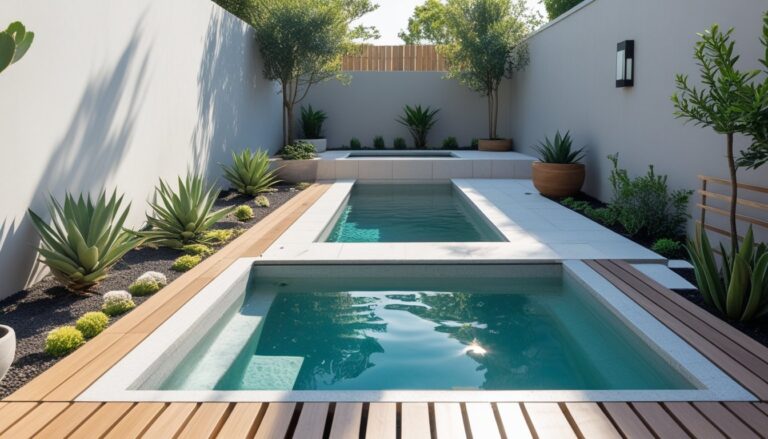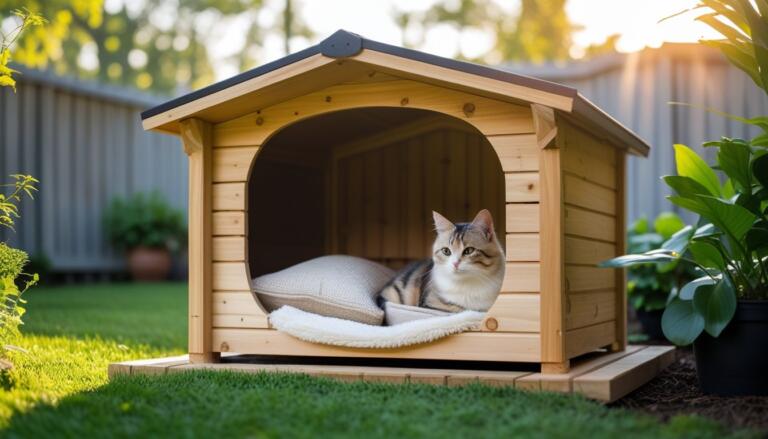7 Kitchen Gardening Ideas to Maximize Space and Harvest Fresh Herbs at Home
Kitchen gardening offers a practical way to grow fresh vegetables, herbs, and fruits right at home. It can fit any space, from small balconies to larger backyard areas, making it accessible for many people.
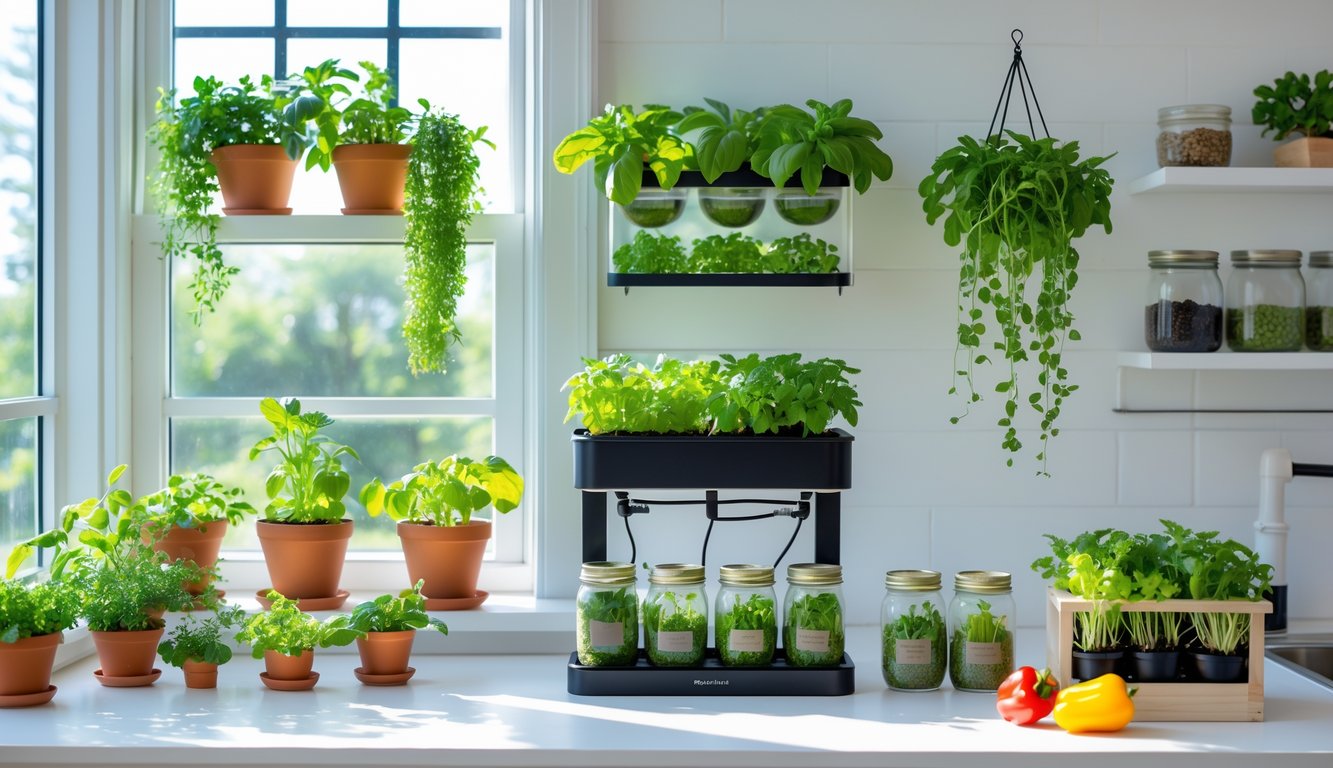
The key to a successful kitchen garden is choosing simple, effective ideas that suit the available space and lifestyle. These ideas help make gardening manageable and rewarding, even for beginners.
1: Raised bed garden for improved soil control and drainage
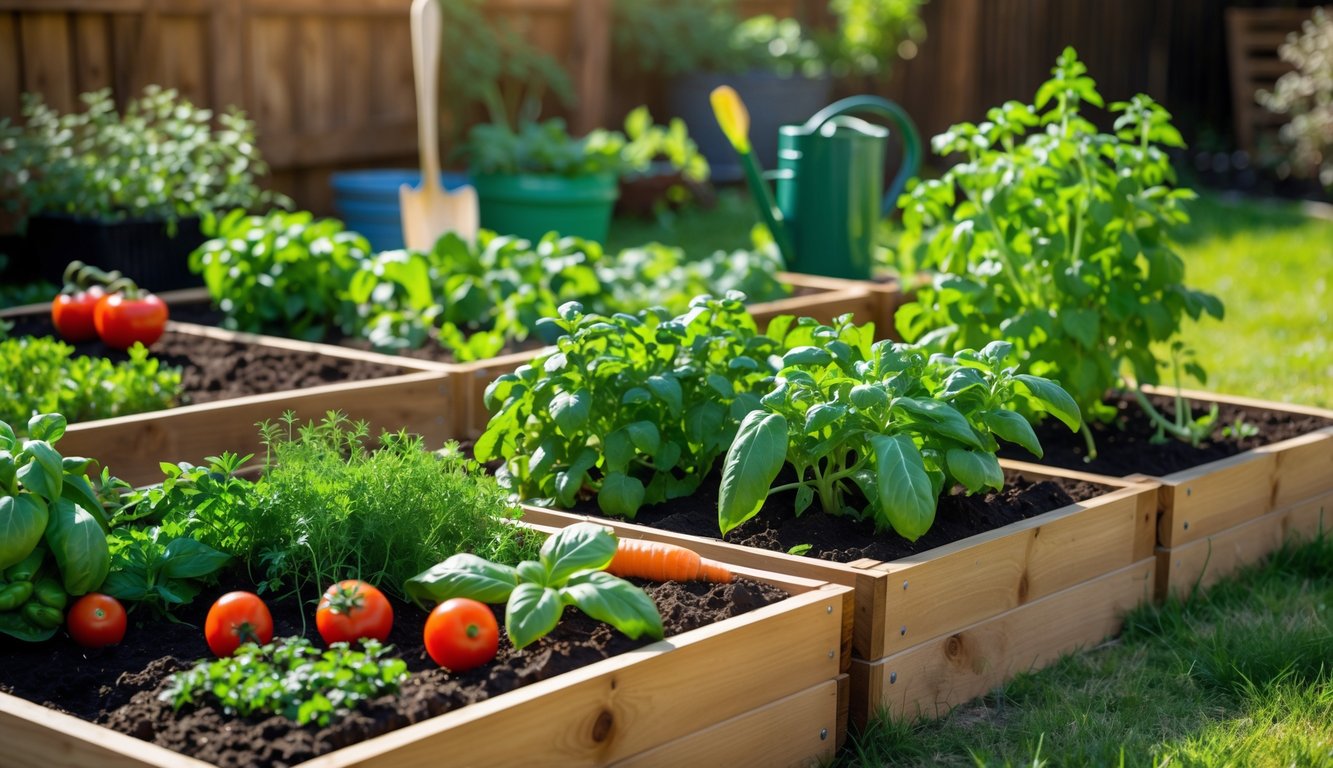
Raised bed gardens allow gardeners to control the soil quality better. They can add compost, sand, or other materials to improve drainage and nutrients.
These beds keep water from pooling around roots, which helps prevent root rot. They also warm up faster in spring, allowing an earlier start to planting.
Raised beds are easier to manage because they reduce soil compaction and make weeding simpler. This setup is useful for growing healthy vegetables and herbs.
2: Vertical trellises to maximize small spaces
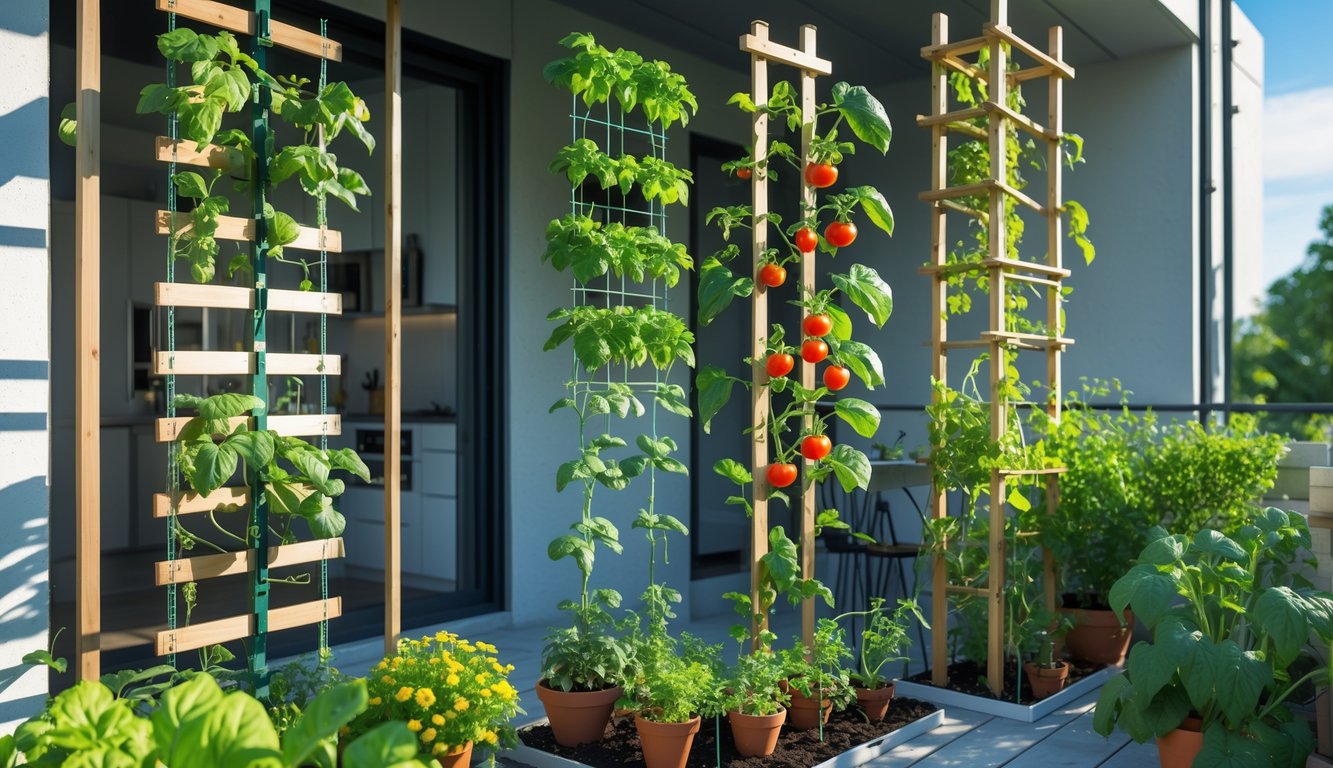
Vertical trellises help gardeners grow climbing plants like beans, peas, and cucumbers without taking up much floor space. They are easy to install against walls or fences.
Using trellises lets plants grow upward, which improves air flow and sunlight exposure. This can lead to healthier plants in small kitchen gardens.
Trellises come in different materials such as wood or metal. They can also be DIY projects using recycled items, making them both practical and customizable.
3: Container gardening with self-watering pots
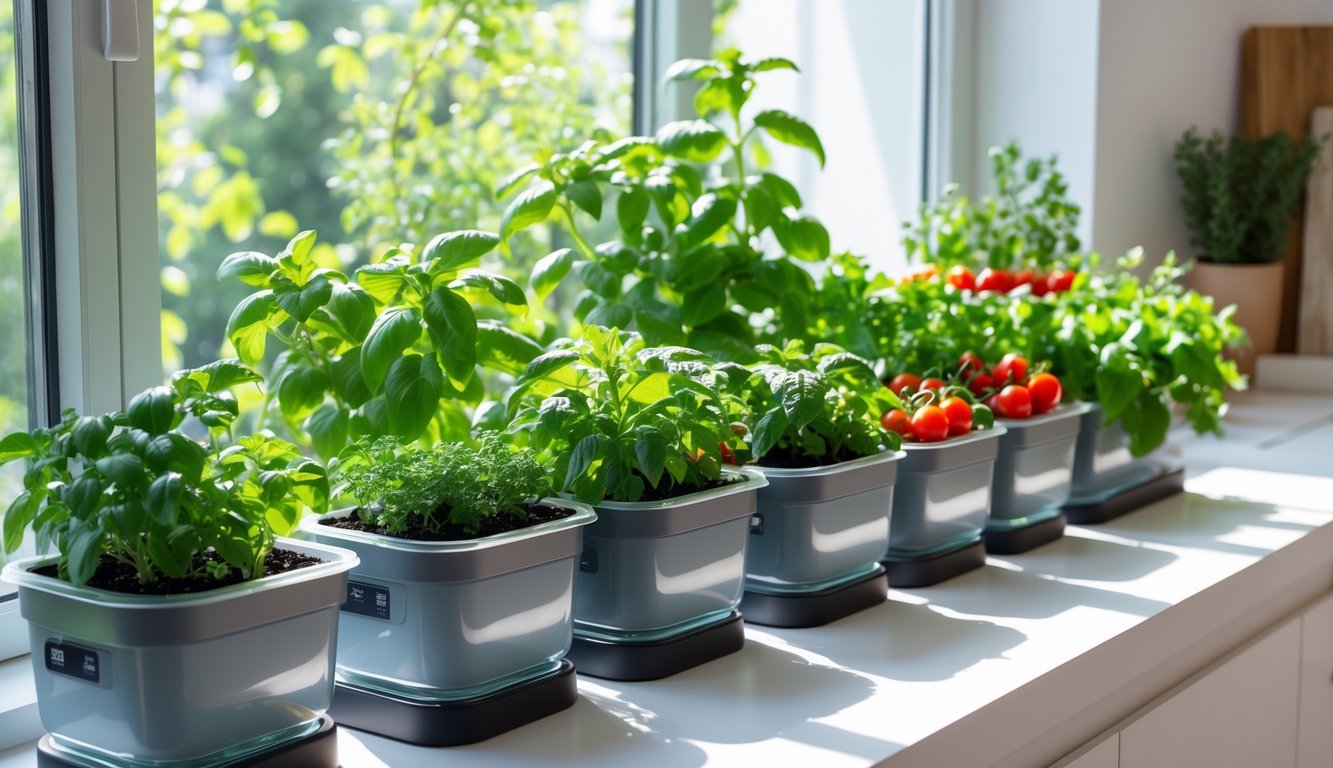
Self-watering pots have a reservoir that supplies water to plants as needed. This keeps the soil moist without frequent watering.
They are useful for busy gardeners or those who forget to water regularly. These pots can help maintain consistent moisture, which supports healthy plant growth.
Using self-watering containers allows indoor or outdoor gardening in small spaces. They are simple to set up and reduce the risk of overwatering or underwatering plants.
4: Herb wall with mounted planters indoors
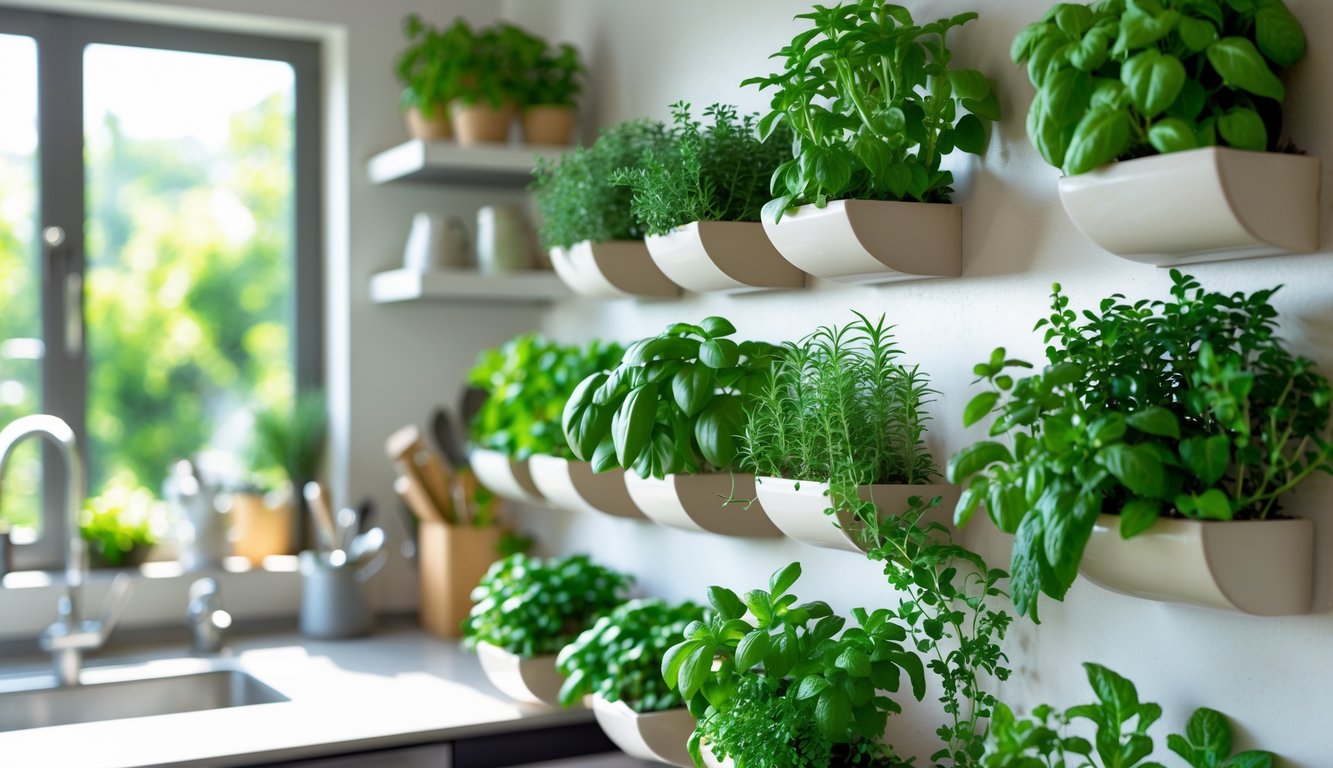
An herb wall with mounted planters is a smart way to save counter space. It uses vertical space on kitchen walls for growing fresh herbs.
These planters can be made from wood, metal, or recycled materials. They keep herbs within easy reach while cooking.
This setup works well in small kitchens or homes with limited sunlight. It also adds a simple, natural decoration to the space.
5: Potager style garden combining flowers, herbs, and vegetables
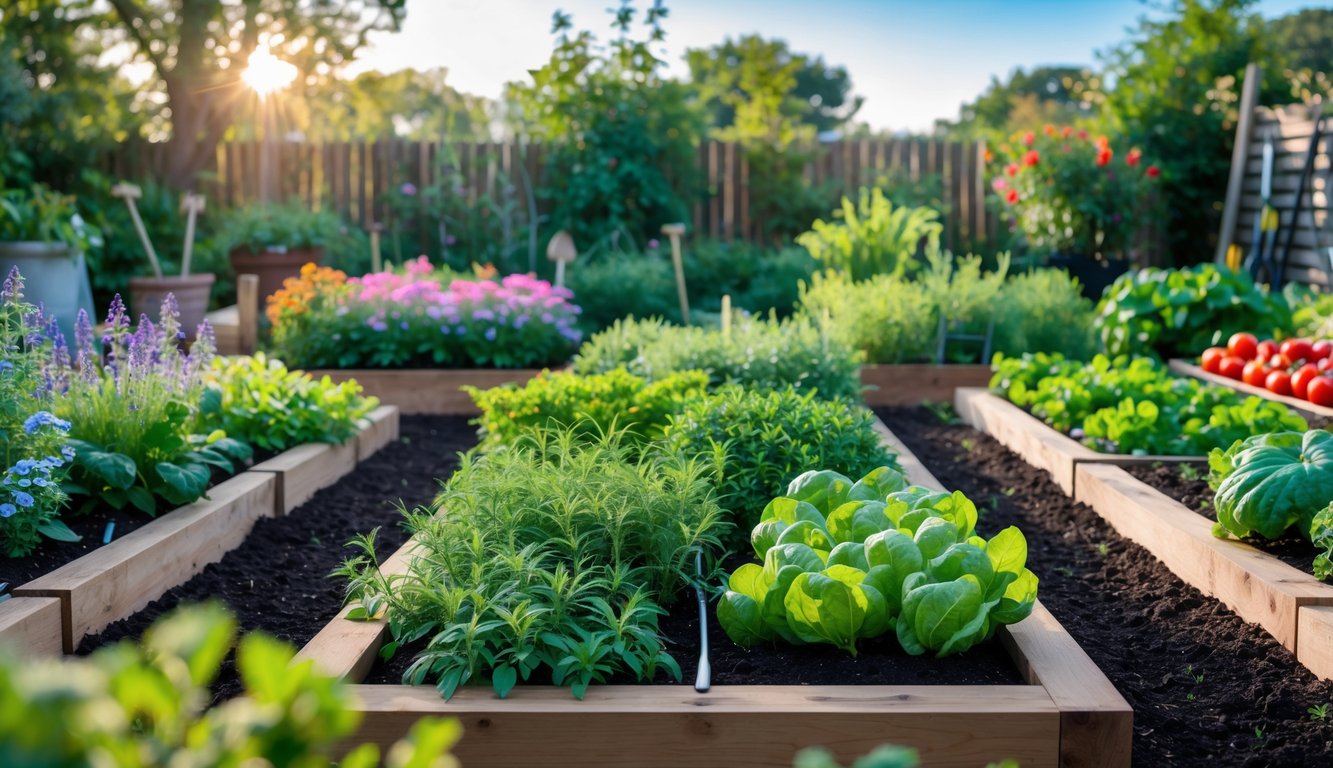
A potager garden blends vegetables, herbs, and flowers in one space. It mixes beauty with function, making the garden both useful and attractive.
Plants are arranged carefully to create a balanced and visually pleasing design. This style often includes colorful flowers to attract pollinators and herbs to deter pests.
The garden can fit any size and style but focuses on easy access and crop rotation. It offers a simple way to grow food while enhancing the garden’s look.
6: Pathways integrated for easy access and maintenance
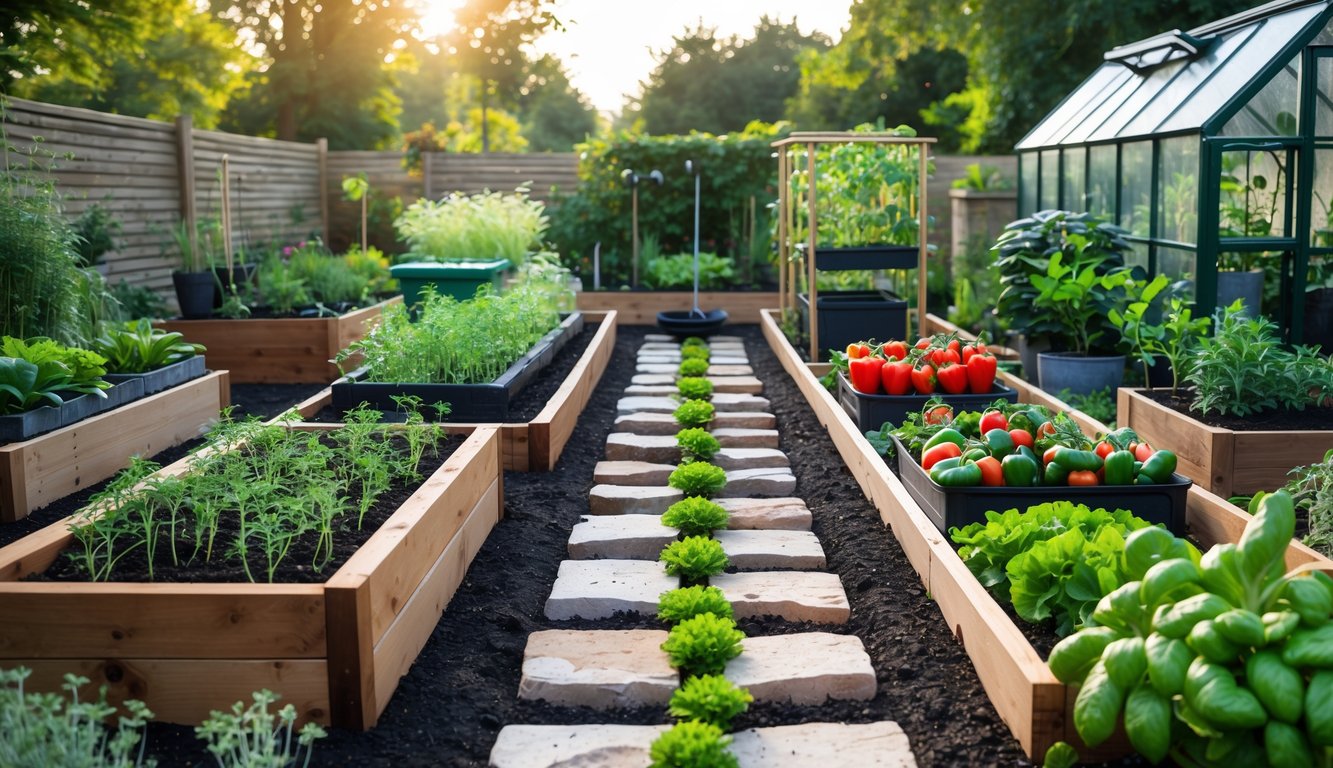
Pathways help gardeners reach plants without stepping on beds. This protects the soil and roots from damage. They also make watering and harvesting easier.
Using simple materials like gravel, wood chips, or bricks keeps pathways neat. Clear paths reduce weeds and lower maintenance needs. Well-planned walkways improve both function and look in a kitchen garden.
7: Succession planting to extend harvest periods
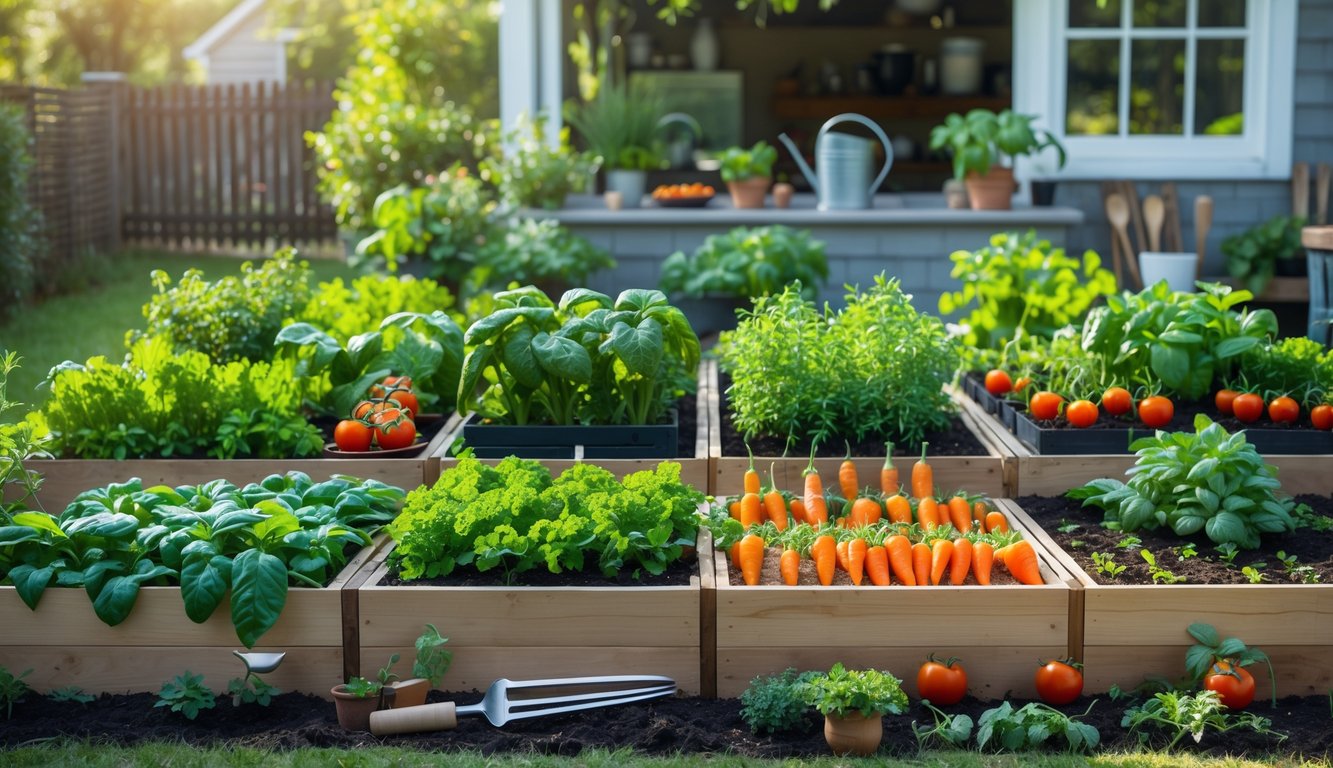
Succession planting means sowing seeds or planting crops in intervals. This helps spread out harvest times instead of getting everything at once.
Gardeners can plant fast-growing vegetables first, then follow with slower ones. This keeps fresh produce coming for longer periods.
It also allows better use of garden space and reduces waste. With some planning, gardeners can enjoy steady harvests through the season.
Choosing the Right Plants for Kitchen Gardens
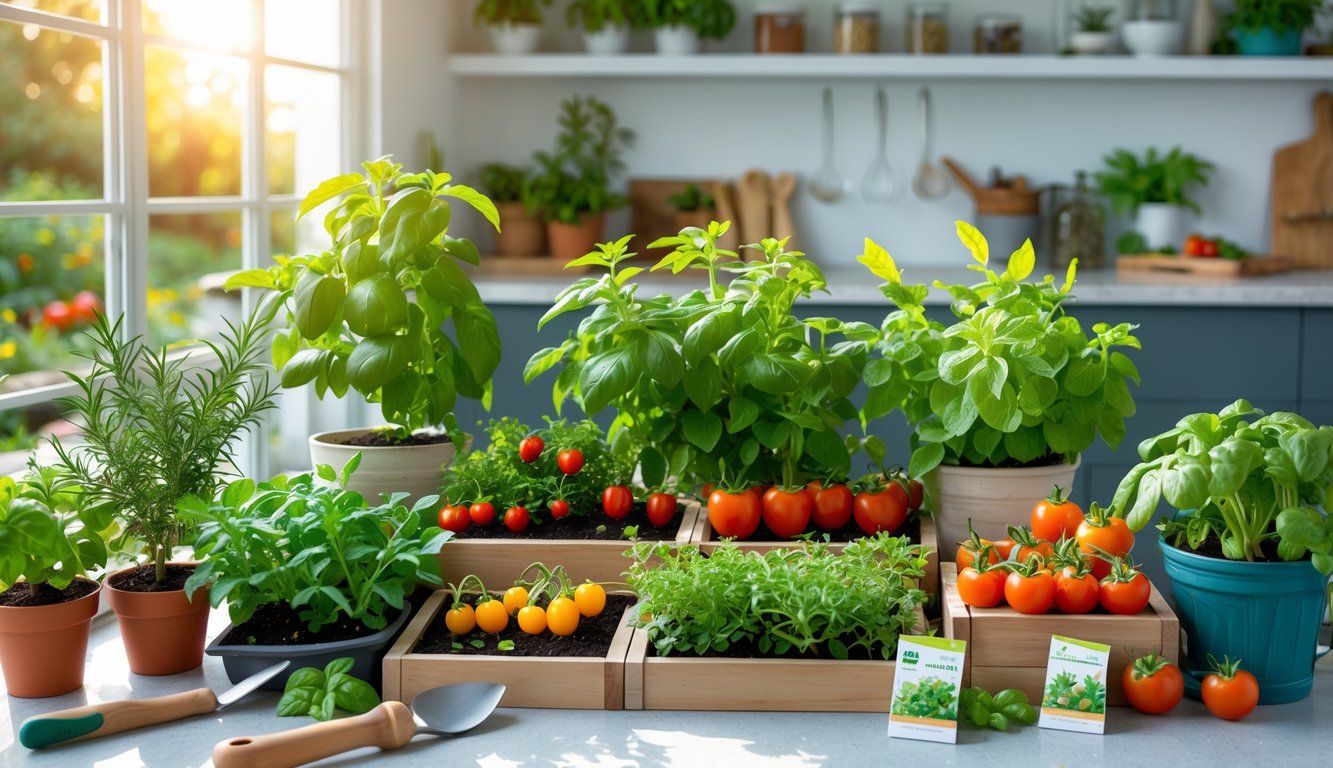
Selecting the right plants is crucial for a successful kitchen garden. Gardeners should focus on edible varieties that fit their space, taste preferences, and local climate. Timing and seasons also play a key role in what can thrive and when to plant.
Best Practices for Selecting Edible Varieties
Gardeners should prioritize plants they regularly use in cooking. Herbs like basil, parsley, and chives are popular because they grow well indoors or outdoors and add fresh flavor to meals. Vegetables such as tomatoes, peppers, and leafy greens are also good choices because they grow quickly and yield often.
Choosing compact or dwarf varieties can help in small spaces or containers. It is important to check the plant’s growth habits, pest resistance, and sunlight needs. For example, tomatoes require full sun, while leafy greens can tolerate some shade.
Using a list to select plants helps focus on ease of care and harvest frequency:
- Herbs: basil, thyme, mint
- Vegetables: cherry tomatoes, lettuce, radishes
- Fruits: strawberries (for small gardens)
This approach turns garden care into an efficient routine and ensures a steady supply of fresh ingredients.
Seasonal Considerations for Plant Growth
Planting at the right time for each species improves success rates. In spring and summer, warm-weather crops like tomatoes, peppers, and cucumbers grow best. Cooler months suit leafy greens, root vegetables like carrots, and herbs such as cilantro.
Gardeners must consider their local climate and frost dates. Starting seeds indoors before the last frost date allows a head start on the growing season. In colder regions, hardy plants can survive shorter outdoor seasons or be grown indoors under lights.
Using a seasonal planting calendar can help schedule when to sow and harvest. Plants fall into three main groups by season:
| Season | Plants to Grow |
|---|---|
| Spring | Lettuce, peas, spinach |
| Summer | Tomatoes, peppers, basil |
| Fall/Winter | Kale, carrots, cilantro |
Matching crops with the right season maximizes growth and harvest length for home gardeners.
Maintaining Healthy Soil and Organic Growth
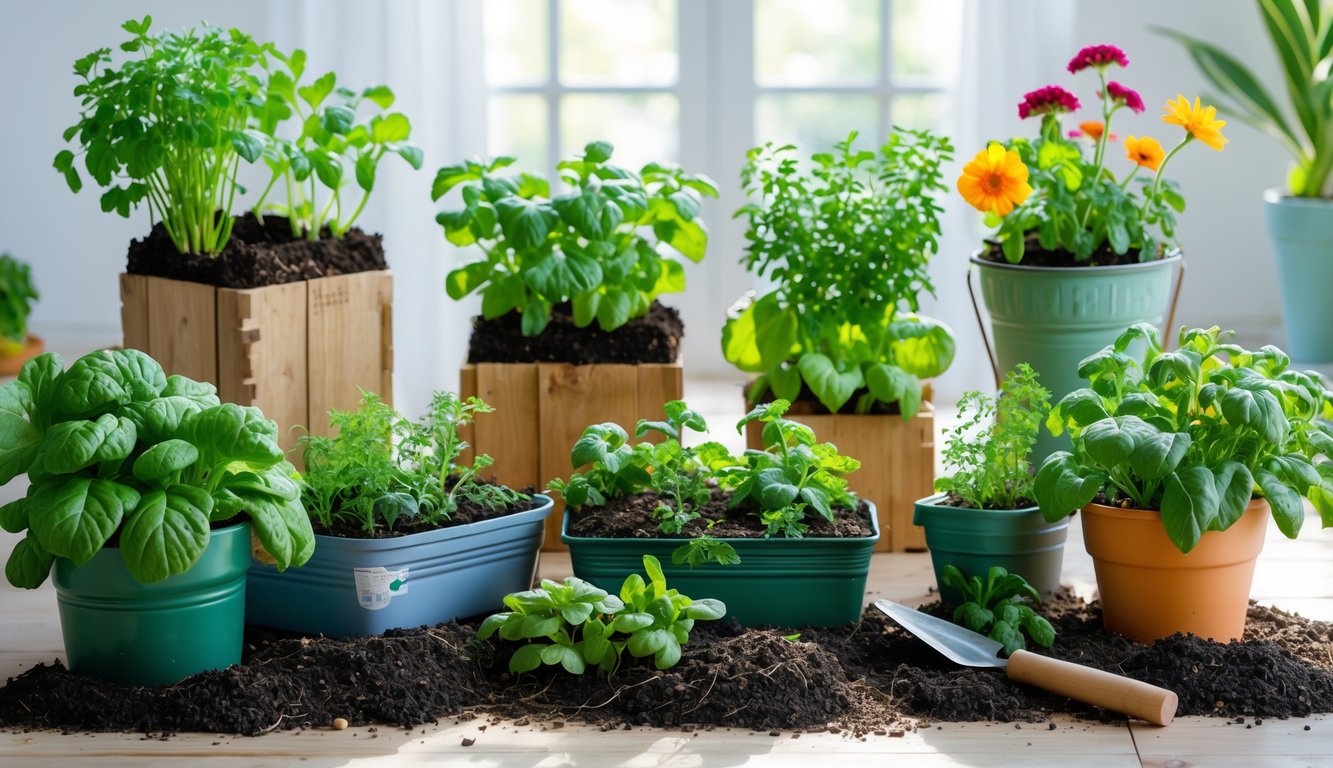
Healthy soil supports strong plant growth by providing nutrients, retaining moisture, and encouraging beneficial microbes. Using natural materials and techniques helps keep the soil fertile without harmful chemicals. Proper care boosts the garden’s overall health and productivity.
Composting Techniques for Small Spaces
Composting turns kitchen scraps like vegetable peels and coffee grounds into nutrient-rich material. Even gardeners with limited space can use small containers or worm bins (vermicomposting) to create compost.
Key tips for small-space composting:
- Use a covered container to reduce odors and pests.
- Add a mix of green (fruit scraps) and brown (dry leaves) materials for balance.
- Turn the compost regularly to speed up breakdown.
- Avoid adding meat, dairy, or oily foods to prevent attracting unwanted animals.
Finished compost improves soil structure, holds water, and feeds plants naturally. It helps reduce waste and dependence on chemical fertilizers.
Using Natural Pest Control Methods
Natural pest control protects plants without toxic chemicals. Techniques include introducing beneficial insects like ladybugs, which eat harmful pests.
Other methods:
- Use insect-repellent plants such as basil or marigold near vegetables.
- Apply neem oil or insecticidal soap, safe options to reduce insects.
- Remove pests by hand when spotted early.
- Keep plants healthy by maintaining good soil and watering practices to resist pests.
These methods help maintain a balanced garden ecosystem and protect edible plants safely.


